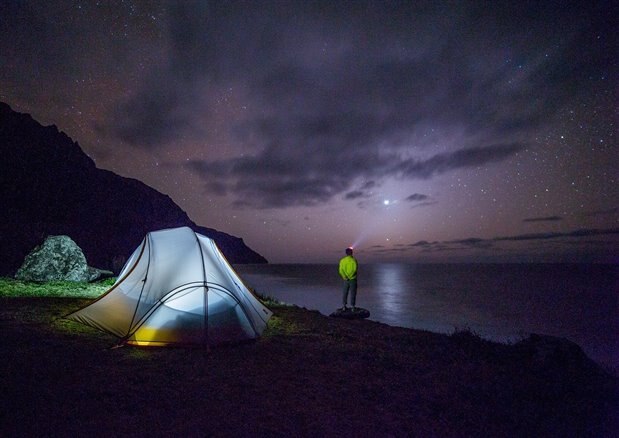More people are turning to citizen science during quarantine to give back to the community and contribute to scientific research. Just because you don’t have a scientific background doesn’t mean you can’t contribute to research.
This is also a question I ask you, have you done anything like this during the pandemic. Let me know in the comment below.
The ongoing pandemic has not only caused a surge in Animal Crossing players. It’s also caused a rise in citizen science or people without specialized training who collect data or perform simple analyses to help scientists in their spare time. Amateurs around the world have been spending quarantine helping institutions gather information on everything from birds to fish and even COVID. Citizen science platforms like Zooniverse and SciStarter reported a major increase in participants leading to rapid results.
But why are we only seeing an increase now? The simplest answer: people are stuck home with little to do. Many also crave a distraction from COVID and the bad news that floods the internet. It’s also a great way to contribute to science and take an active role in the community, something that’s sorely lacking in lockdown. It’s a way to give back to organizations that doesn’t involve donating money.
For example, there are several initiatives dedicated to fighting COVID. One collaboration comes from distributed computing organization Folding@home and COVID Moonshot, a crowdsourced project to accelerate the development of COVID-19 antivirals.
A sidebar: I’ve processed over 500,000,000 points battling covid with the element14 team. Although we have a vaccine, the fight is far from over. New ways to fight it are needed, I’m sure. Join the team today!
More than 200,000 volunteers are helping to find potential treatments for COVID by running a program that simulates the process of protein “folding” using their computers. Researchers at the University of Washington set up a similar platform to find COVID treatments using a computer game called Foldit, which involves designing proteins that could attach to the virus that causes COVID and prevent it from entering cells. Another initiative was launched by Carnegie Mellon University’s Roni Rosenfeld where volunteers helped artificial intelligence predict the spread of COVID.
Other citizen scientists are finding ways to turn their hobbies into scientific research. The Smartfin Project, a program at Scripps Institution of Oceanography, asks volunteers to surf using a device called Smartfin to gather data about near-coastal areas that traditional instruments can’t reach. The device is placed on the surfboard fin and measures sea-surface temperature, salinity, acidity, and ocean parameters while riding the waves.
Elsewhere, the Appalachian Mountain Club’s program Mountain Watch enlists volunteers to use their mobile devices to take pictures of plant life they see while hiking and share the images via the iNatrualist app. (I did a little of this.) The submissions are then used to track plant development and learn about the climate’s effect on local vegetation. And the Secchi Disk Study asks seafarers to create a Secchi Disk and use it to help marine scientists measure water clarity to learn more about phytoplankton.
Recently, Sunniva Sorby and Hilde Fålun Strøm became the first women to overwinter – or spend winter alone – in the Arctic. They not only made history, but they produced invaluable data about the environment in the process. They spent 2019-2020 at Bamsebu, a historic trapper’s cabin, where they gathered data on the environment, phytoplankton, and the aurora borealis. This information has been used for research and projects by organizations such as The British Columbia Institute of Technology (BCIT), the Scripps Institution of Oceanography, and NASA. The trip also played a role in their Hearts in the Ice (HITI) project, which they started in 2017 to raise awareness about climate change in polar regions.
The Living Snow Project asks those who spend time around the Northern Cascades to help them study pink snow, an occurrence where the snow takes on a reddish hue due to the growth of ice-adapted algae. Volunteers can share their observations via an app or by collecting pink snow samples to help scientists at Western Washington University learn more about this process.
In Kentucky, a group of high school students and teachers are helping researchers pilot-test a family-centered, youth-engaged home radon testing toolkit. Developed by the University of Kentucky Center for Appalachian Research in Environmental Sciences (UK-CARES), UK College of Nursing’s Bridging Research Efforts and Advocacy Toward Healthy Environments (BREATHE), and the University of Cincinnati (UC) Center for Environmental Genetics (CEG), students were trained to inform their parents about the dangers of radon. They also surveyed homeowners to assess how serious they perceived illnesses caused by radon along with the likelihood of radon present in their homes. Homeowners were then given at-home radon test kits to assess their home’s air quality.
Citizen science shows you don’t need certifications or a science degree to contribute to research. All you need is some time and the passion for helping out worthy causes. It’s also a great way to use your hobbies as a means for data collecting. And it’s better than binge-watching The Crown for the fifth time.
Have a story tip? Message me at: http://twitter.com/Cabe_Atwell


-

genebren
-
Cancel
-
Vote Up
0
Vote Down
-
-
Sign in to reply
-
More
-
Cancel
Comment-

genebren
-
Cancel
-
Vote Up
0
Vote Down
-
-
Sign in to reply
-
More
-
Cancel
Children